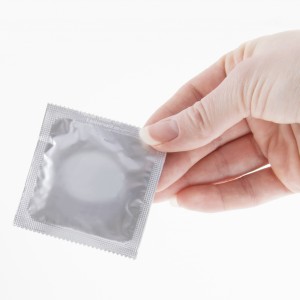 Sexually Transmitted Diseases, or STDs, are usually spread from one person to another through sexual intercourse. STDs may be asymptomatic (not show any symptoms) in many individuals. In fact, many of the people who have a STD are unaware of it and therefore do not seek treatment, increasing the risk of infecting their partners. For this particular reason, the term STIs, or sexually transmitted infections, is commonly used today. It is extremely important for individuals who are sexually active to be regularly screened for STDs, because an infected person may pass on the infection to another before showing symptoms of a disease.
Sexually Transmitted Diseases, or STDs, are usually spread from one person to another through sexual intercourse. STDs may be asymptomatic (not show any symptoms) in many individuals. In fact, many of the people who have a STD are unaware of it and therefore do not seek treatment, increasing the risk of infecting their partners. For this particular reason, the term STIs, or sexually transmitted infections, is commonly used today. It is extremely important for individuals who are sexually active to be regularly screened for STDs, because an infected person may pass on the infection to another before showing symptoms of a disease.
Who is at risk for STDs?
Anybody can contract a STD. The most at risk group are young teens and adolescents ages 15-24. Factors that increase the risk for getting STDs include:
- Unprotected sex
- Multiple sexual partners
- Having sex with a partner whose sexual history you do not know
- Becoming sexually active at a young age
- Tobacco and alcohol use
- Stress and other viral or bact
Why is it important to know?
Sexual activities can lead to not only unwanted pregnancy but also a list of STDs (Sexually Transmitted Diseases)—some of which can be fatal. Today STDs are at epidemic proportions, and young people are the ones at the highest risk. Unfortunately, many teenagers are unaware of the dangers they face and do not take the initiative to learn about sexual safety until it is too late. To reduce your own risk of getting STDs and pregnancy, it is extremely important for you to learn to protect yourself!
Principles of Safer Sex:
- Seriously consider whether you want to have sex
- Prevent exposure to blood, semen, vaginal and other bodily fluids
- Cover up body parts that could be infectious
- Always use a condom, and use a new one every time
- Be in a monogamous relationship
- Make sure both you and your partner get tested for STDs
- If you or your partner have/has contracted a STD, receive treatment immediately and do not have sex until your doctor says it’s okay
We use the term safer instead of safe because sexual activities can never be completely free of risk. The only way to entirely avoid STDs and unwanted pregnancy is abstinence (not having
Menstruation, or period, is the shedding of a woman’s uterus lining. Each month, one of the ovaries releases an egg. This is called ovulation. At the same time, hormonal changes prepare the uterus for pregnancy. If ovulation takes place and the egg is not fertilized, the lining of the uterus sheds through the vagina and passes out the body (this is the blood that you see). Menstruation is part of the menstrual cycle. A cycle is counted from the first day of one period to the first day of the next period. The average menstrual cycle is 28 days long. If a woman does not have a period for 90 days, she should see the doctor to check for pregnancy, early menopause, or other medical problems. On an average, girls get their first menstrual period between 8-13 years old. The first menstrual period typically starts two to two-and-a-half years after breast development begins. Periods can be light, moderate, or heavy, and the length of the period also varies from woman to woman. Most periods last from 3 to 5 days. During the early years of menstruation, girls usually have “medium” menstrual flow; most report changing a pad approximately 3 to 6 times a day. During menstruation, the uterus, which is a muscle, contracts and relaxes more than it does at other times in the month. This can produce the uncomfortable feeling of cramps. Using a heating pad or hot water bottle may help ease s
What is Cervical Cancer?
The cervix is the lower part of the uterus, and cervical cancer is one of the most common cancers that affect a woman’s reproductive organs. Cervical cancer is caused by various strains of a virus called human papilloma virus (HPV), some of which are also responsible for causing genital warts in both men and women. HPV is transmitted through skin-to-skin contact, especially during sexual intercourse. Most women’s immune systems are able to fight the infection, but in a small group of women, the virus survives for years in the body and eventually changes some of the cervical cells into cancer cells.
Routine Screenings and Early Detection of Cervical Cancer:
Cervical cancer can usually be found early by routine Pap smears (or Pap tests). During a Pap smear, a small cell sample is collected through a quick swabbing or brushing on part of the cervix, and the sample is examined in a laboratory to look for abnormalities. In the precancerous stage, abnormal cells are found only in the outer layer of the cervix and have not invaded deeper tissues. If untreated, the abnormal cells may change into cancer cells, which may spread into the cervix and surrounding organs. Conditions caught early at the pre-invasive stage are rarely life threatening and typically require only treatment at the doctor’s office.
The inside of the breast is made up of fatty tissue and milk-producing glands called mammary glands. Breast development begins with puberty and is caused by the changes in hormone levels in your body. The timing of breast growth is determined by heredity and nutrition. On the average, breasts begin to grow when girls are around 10 years old, although some girls start earlier and others later. The age at which breast development begins does not affect the final size of the breast. Breast shape and size are determined mostly by heredity and usually stay the same once development is complete (which takes 3-5 years). However, excessive weight loss or gain, and pregnancy, may cause changes to the breasts. A girl may find her breasts to be uneven in size during development. This is normal. The breasts will be about the same size as the girl gets older, usually by age 20. You can check with your health care providers for further information.
What Is Overweight?
Overweight refers to an excess of body weight compared to set standards. The excess weight may come from muscle, bone, fat, and/or body water. One scientific tool to estimate a healthy body weight is a Body Mass Index (BMI), which is a measurement that compares a person’s weight and height. For children and teens, age and gender are also taken into consideration. For adults, a BMI of 25.0 to 29.9 is considered overweight, and a BMI of 30 or over is considered obese. For Asian adults, a BMI of 23.0 to 27.4 is considered overweight, and a BMI of 27.5 or over is considered obese. To calculate your BMI and see what it means to you: For adults and teens – http://cchrchealth.org/en/calculators/
What Is a Healthy Weight Loss?
Studies show that people who lose weight gradually and steadily (about 1-2 pounds per week) are more successful at keeping the weight off. Healthy weight loss is not just about a diet or program. It is about an ongoing lifestyle that includes long-term changes in daily eating and exercise habits. In the process, it is extremely important for you to have a properly planned diet, which should not only limit your calorie intake but also, more importantly, provide you with all the nutrients you need to stay health
Overview:
Sports injuries are the number ONE reason for emergency room visits among youth. The majority of these injuries are mild, but they can cause great inconveniences to the injured person. With proper precautions, many of these injuries can actually be prevented.
Common Sports Injuries:
- Bruises – Injuries in which the capillaries are damaged, allowing blood to seep into the surrounding tissues.
- Sprains – The pulling or tearing of the ligaments that join the ends of bones together. Sprains commonly affect the ankles, knees, and wrists.
- Strains – The pulling or tearing of muscles or tendons (the tissues that attach the muscles to the bones).
- Bone fractures – The cracking or breaking of bones.
- Dislocation of joints – The bones in a joint become displaced or misaligned. It is often caused by a sudden impact to the joint.
- Tearing of the Achilles tendon – The Achilles tendon is the large group of tissues that connects the calf muscles to the heel.
- Overuse injuries – Injuries such as “runner’s knee” and “tennis elbow,” that are due to overuse of a body part when participating in a certain activity
 What Is Vegetarianism?
What Is Vegetarianism?
Vegetarianism is the practice of a diet that excludes meat, poultry, and fish (including other seafood). There are several variations of vegetarianism, some of which also exclude eggs, dairy foods, or other animal by-products:
- Lacto-vegetarians: Eat dairy products, but no meat, poultry, fish, or eggs
- Ovo-vegetarians: Eat eggs, but no meat, poultry, fish, or dairy products.
- Lacto-ovo vegetarians: Eat dairy products and eggs, but no meat, poultry, or fish.
- Vegans: Do not eat any animal products.
Why Do People Become Vegetarians?
There are many reasons why people choose to follow a vegetarian diet, some of which include:
- Food likes and dislikes
- Animal rights concerns
- Religious or cultural beliefs
- Diet and health concerns
- Family decision
These are acceptable reasons for choosing not to eat meat. It is important to note that in some cases, the decision to avoid meat or to be on an overly restri
 It’s summer, time to hit the beach or tanning salon for that perfect tan. Few things are more satisfying than your friends noticing how much time you spent on your tan and complimenting you on your luscious bronze glow. Why does something like our skin tone matter so much? Is it because a pale or an untanned skin triggers images of nerds who spend their entire summer indoors playing video games?
It’s summer, time to hit the beach or tanning salon for that perfect tan. Few things are more satisfying than your friends noticing how much time you spent on your tan and complimenting you on your luscious bronze glow. Why does something like our skin tone matter so much? Is it because a pale or an untanned skin triggers images of nerds who spend their entire summer indoors playing video games?
Dark skin vs Fair skin
In the American society, we associate tans with sexy supermodels, athletes and movie icons. Having a great tan is often considered a symbol of good health. A tanned skin is a way to identify our social hierarchy, kind of like the different insignias to differentiate between military ranks. Sporting a tan shows that you have the time and money to lay around all day in the sun instead of being stuck in the office all day trying to pay off the bills. However, in the Chinese culture, the exact opposite is true. Here, the fair skinned is the prized possession. Tans are associated with those who must labor all day under the hot sun.
How Fast Does Hair Grow?
Hair on the scalp grows about 0.3 to 0.4 millimeter per day or about 6 inches per year. Unlike other mammals, human hair growth and shedding is random and not seasonal or cyclical.
What Can Hurt Your Hair?
- Excessive sun exposure
- Exposure to sea water or chlorine in the swimming pool
- Use of curling or hair straightening irons
- Excessive heat when blow drying
- Excessive and hard brushing
- Chemicals in styling products.
- Chemicals for hair coloring, straightening, and permanent waving
What Are “Split Ends”?
Split ends are, literally, splitting of hairs at the ends. It is typically caused by over-use of styling chemicals, frequent or excessive rubbing while washing the hair. Although split ends cannot be completely prevented, routine haircuts and careful washing/styling habits will help improve the appearance of your hair.
What Happens When I Dye My Hair?
The hair shaft consists of layers of structured proteins (keratins) and protective oils. In order for hair color to be changed, the natural oils have to be partially removed by a bleaching agent and the keratin layers have to be “softened,” so that the coloring ag


